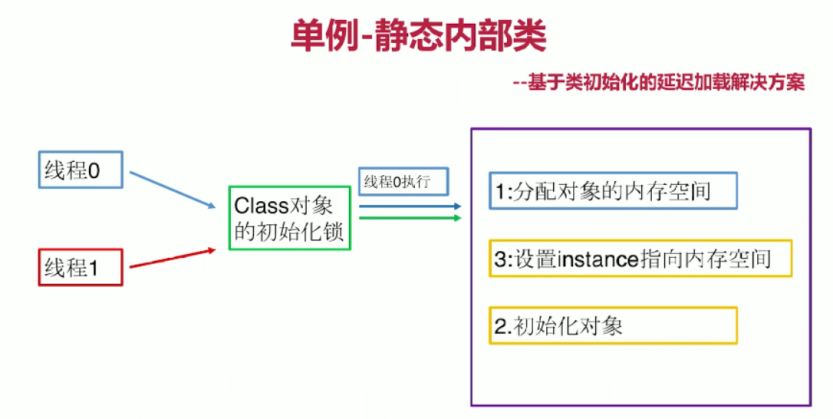课程名称:Java设计模式精讲 Debug方式+内存分析
课程章节:第6章 单例模式
主讲老师:Geely
课程内容:
问题1)定义?
保证一个类只有一个实例对象,并提供全局访问。
问题2)使用场景?
确保任何情况下都绝对只有一个实例。
线程池,数据库连接池。
问题3)优点和缺点?
优点:内存中只有一个实例,减少内存开销。
可以避免对资源的多重占用。
设置全局访问点,严格控制访问。
缺点:没有接口,扩展困难(扩展就需要修改代码,不符合开闭原则。)
问题4)单例的重点?
私有构造器(防止从外部创建对象)
线程安全(从线程安全)
延迟加载(在使用的时候再创建)
序列化和反序列化安全(一旦进行序列化和反序列化,就会破坏单例)
反射(防止反射攻击)
反编译(技能)
内存原理(技能)
多线程debug(技能)


问题5)
单例模式和工厂模式 一起使用
单例模式和享元模式 一起使用
问题6)多线程debug?
如果选择all表示只在当前线程打下debug。
选择Thread表示只要执行该端代码的都会打上debug。

进行单个线程调试。一个一个线程调试。

synchronize实现单例模式,单例线程安全实例?
方案1:synchronized保证了单例线程安全。但是synchronize锁的范围太大,每个线程都要判断是否上锁,锁是否释放,是非常销毁资源的。
public class lazySingleton {
/**
* 1、延迟加载是实例,使用的时候通过getInstance静态方法获取实例(不是通过new对象)
* 2、隐藏构造器,防止外部调用。
* 3、通过静态的方法返回实例、
*
* synchronized 线程安全。
*/
private static lazySingleton singleton = null;
public synchronized static lazySingleton getInstance(){
if (singleton == null){
singleton = new lazySingleton();
}
return singleton;
}
}
写一个线程类:
public class th implements Runnable {
@Override
public void run() {
lazySingleton singleton = lazySingleton.getInstance();
System.out.println(Thread.currentThread().getName()+singleton);
}
}
测试:
public class test {
public static void main(String[] args) {
/* lazySingleton singleton = lazySingleton.getInstance();
System.out.println(singleton);*/
Thread th01 = new Thread(new th());
Thread th02 = new Thread(new th());
th01.start();
th02.start();
System.out.println("end");
}
}

 随时随地看视频
随时随地看视频




